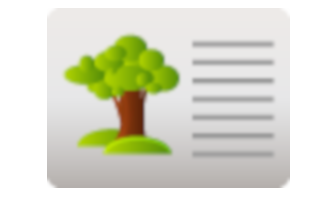Government and Political Systems
Social Studies, Grade 3
Government and Political Systems
Study Guide

Government and Political Systems
Flash Cards

Government and Political Systems
Quiz

Government and Political Systems
Worksheets

Government and Political Systems
Games

Study Guide Government and Political Systems Social Studies, Grade 3
❮
1
/
4
❯
GOVERNMENT AND POLITICAL SYSTEMS What is a government? A government is people who make decisions about a city, state, or country. A democratic system exists when the people who run the government are selected by the citizens. An autocratic system has a ruler who came to power by strength or birth. Some examples of different governments: Monarchy - a government in which a King or Queen or Emperor has supreme power Totalitarian - also called dictatorship in which government is ruled by a single party without opposition Direct Democracy - government run by citizens Commonwealth - group of self-governing states loosely associated with a country Republic – A government in which citizens elect representatives to speak for them. The United States is a republic. Communism - a political system in which goods are owned and shared by everyone Socialism - government ownership of all goods and services distributed according to work done © Copyright NewPath Learning. All Rights Reserved. Permission is granted for the purchaser to print copies for non-commercial educational purposes only. Visit us at www.NewPathLearning.com.
Vocabulary: • Candidate - a person who runs for office. He or she wants to represent the citizens. • Vote - to elect leaders for government. When we vote we give our consent, or permission, for our candidate to make and carry out our laws. • Ballot - an electronic or printed form used to vote • Polling place - the place where voters cast their ballots • Electoral College - people chosen by the voters of each state to cast the official votes for president © Copyright NewPath Learning. All Rights Reserved. Permission is granted for the purchaser to print copies for non-commercial educational purposes only. Visit us at www.NewPathLearning.com.
• Executive Branch (in U.S. democratic structure) o President - head of the federal government o Governor - head of the state government o Mayor - head of the local government • Veto - power of the executive to reject new laws • Legislative Branch (in U.S. democracy) - makes the laws o Senate o Representatives (Also called the Assembly in state government) • Judicial Branch – (in U.S. democratic structure) judges and courts interpret the laws and decide on punishment for those who break the laws • Capitol - the main government building where governing groups meet • Capital - the city where government offices are located • Federal - refers to the government of our whole country • Tax - money citizens pay for government services • Parliament - a group of people who choose their leader referred to as the Prime Minister in a British system of government In the United States we have local, state, and federal governments. Services provided by local governments. Use tax money to pay for public education, school busing, public library, police and fire departments, parks, roads, sidewalks, bike paths. Some local governments pay for public transportation, public swimming pools, senior center, sports leagues, and trash removal. Services of state governments. Make the laws for the state. Make rules for public schools and colleges. Collect and distribute taxes in the state. Courts decide if state laws have been broken. Services of federal government. Make laws for the entire country. Provide for Armed Services such as Army, Navy, Marines, Coast Guard, National Guard. © Copyright NewPath Learning. All Rights Reserved. Permission is granted for the purchaser to print copies for non-commercial educational purposes only. Visit us at www.NewPathLearning.com.
Political Parties – The Federalist Party - In the early days of the US, some men including Alexander Hamilton and other wealthy businessmen believed in a strong national government. They valued strong economic ties with England. The Democratic Republican Party - Thomas Jefferson and other men believed state governments should be stronger than the central government. They favored low government spending. The Democratic Party - Formed in 1828, it favored social programs to help small farmers and city workers. The Republican Party - In 1854, it was formed by men who wanted to end slavery. Sometimes, it is referred to as the GOP, its nickname that stands for Grand Old Party. The Green Party - formed by consumer groups and environmentalists. Some political parties are no longer in existence. • National Prohibition Party - Formed in 1872 by men who did not want any alcohol sold in the U.S. • Progressive Party - Formed in 1912 supported government reform and woman’s suffrage. • The Whigs - Formed in 1834, to oppose the Democrats, they believed in limiting the power of the president. By 1861, they were no longer a party. • Know Nothing Party - formed in 1856 © Copyright NewPath Learning. All Rights Reserved. Permission is granted for the purchaser to print copies for non-commercial educational purposes only. Visit us at www.NewPathLearning.com.
